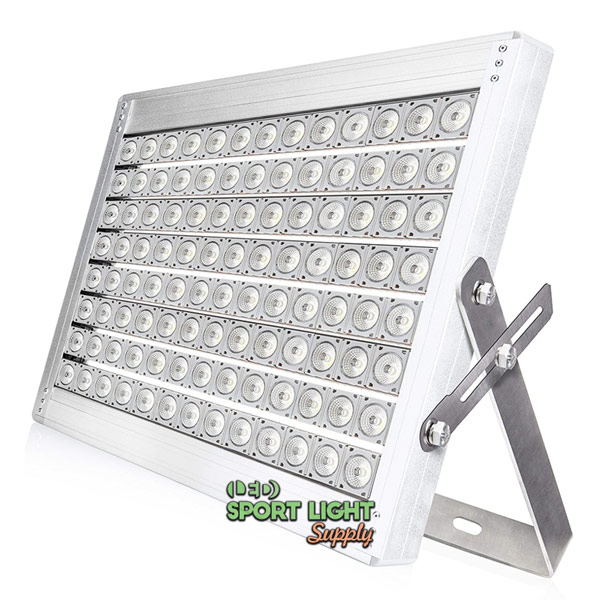
Elevate your sports facility with our cutting-edge high-power LED sports lighting. Engineered to provide superior brightness and clarity, our lighting solutions are designed to enhance the performance and safety of athletes across a variety of sports. Whether you manage a professional stadium, a community sports field, or an indoor arena, our versatile lighting options deliver exceptional results.
Ready to upgrade your sports field lighting? Contact us today to discuss your specific needs and get a customized quote. Our expert team is here to provide professional lighting consultation, answer any questions, and help you choose the perfect solution for your facility.
Selecting the right sports lighting is crucial for ensuring optimal performance and safety on the field. Whether you are lighting a professional stadium or a local community sports facility, choosing the best lighting solution involves several considerations. This guide will walk you through the essential factors to keep in mind when selecting sports lighting to meet your needs.
The primary purpose of sports lighting is to provide adequate illumination for athletes, spectators, and officials, enabling clear visibility and enhancing safety. High-quality sports lighting ensures that players can perform at their best regardless of the time of day or weather conditions. For professional-level play, the lighting must meet specific standards to facilitate broadcasting and high-definition coverage. In contrast, recreational facilities may prioritize cost-effectiveness and energy efficiency while still delivering sufficient light for gameplay.
Before selecting sports lighting, it’s essential to assess the specific lighting requirements of your facility. Different sports and field types have unique illumination needs. For example, a soccer field requires uniform lighting across a large area, while a tennis court may need focused lighting to enhance visibility on a smaller scale. Understanding these requirements will help you choose a lighting solution that provides the appropriate light levels and distribution for your facility.
One of the most critical aspects of sports lighting is the light levels, measured in lux. Adequate lux levels ensure that the entire field is well-lit, preventing dark spots that can hinder gameplay. For professional sports, the lighting must meet industry standards for lux levels to ensure a fair and high-quality experience. Uniformity is also crucial, as uneven lighting can create distracting shadows and glare. When evaluating lighting options, consider solutions that offer consistent illumination across the entire field or court.
The type of lighting technology used in sports lighting systems significantly impacts performance, efficiency, and maintenance. Traditional lighting options like metal halide and high-pressure sodium lamps are common but can be less efficient and require frequent maintenance. Modern LED lighting has become the preferred choice for sports facilities due to its numerous advantages. LEDs offer higher energy efficiency, longer lifespan, and lower maintenance requirements compared to traditional options. Additionally, LEDs provide better color rendering and reduced glare, enhancing the overall visibility and experience.
Color temperature, measured in Kelvin, affects the appearance of light and the visual comfort of players and spectators. Sports lighting generally falls into the range of 4000K to 6000K. A higher color temperature, such as 5000K or above, provides a cooler, daylight-like appearance that is often preferred for outdoor sports. This cooler light enhances contrast and visibility, making it easier for players to track fast-moving objects like balls. For indoor facilities, a slightly warmer color temperature may be used to create a more comfortable environment.
Glare and light pollution are important considerations when selecting sports lighting. Excessive glare can be distracting and uncomfortable for players and spectators. Choosing lighting fixtures with appropriate shielding and optical control can help minimize glare and ensure that light is directed where it is needed. Additionally, reducing light pollution is essential for preserving the surrounding environment and minimizing the impact on nearby residential areas. Opt for lighting solutions that offer controlled light distribution and minimize overspill beyond the field or court.
Sports lighting systems are exposed to various environmental conditions, including weather, dust, and physical impacts. Therefore, durability is a key factor when selecting lighting solutions. Look for fixtures that are built to withstand harsh conditions and have high ingress protection (IP) ratings. Additionally, consider the maintenance requirements of the lighting system. LED lights generally require less maintenance compared to traditional options, but it’s still important to choose fixtures with easy access for maintenance and repair.
Energy efficiency is a significant factor in selecting sports lighting, as it directly impacts operational costs and environmental sustainability. LED lighting is known for its energy efficiency, consuming less power while providing superior illumination compared to traditional lighting technologies. Additionally, consider the total cost of ownership, which includes installation, energy consumption, and maintenance. Investing in high-quality, energy-efficient lighting solutions can lead to long-term savings and a lower environmental footprint.
Choosing the best sports lighting involves technical expertise and knowledge of industry standards. Consulting with lighting professionals can provide valuable insights and guidance in selecting the most suitable solution for your facility. Lighting designers can assess your specific needs, provide recommendations, and help you understand the technical aspects of different lighting options. Their expertise can ensure that you make an informed decision and achieve the best lighting outcome for your sports facility.
Selecting the best sports lighting requires careful consideration of several factors, including lighting requirements, light levels, technology, color temperature, glare, durability, and energy efficiency. By understanding these elements and consulting with lighting professionals, you can choose a lighting solution that enhances performance, safety, and the overall experience for athletes and spectators. Investing in high-quality sports lighting not only improves gameplay but also contributes to the success and enjoyment of every sports event held at your facility.
Drop us a line to receive a free lighting design